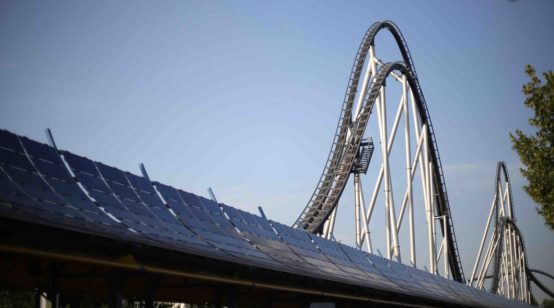
Norway’s state-run Statoil is using its position as the majority partner in the Scottish Hywind offshore floating wind farm, a global first, to develop battery technology.
Statoil said this month it had selected Younicos, a German-US global battery storage company, to install a 1-megawatt (MW) battery system contained in two 10-foot, Y Cube containers near Peterhead on Scotland’s eastern coast.
The system integrator and technology provider Younicos this month completed the installation and commissioning of an upgraded 36MW battery-based storage site of Duke Energy’s 153MW Notrees Windpower Project in Texas. The company replaced previously deployed lead-acid technology with Samsung SDI lithium-ion batteries.
It is hoped the Scottish Younicos batteries will not be another grid-scale battery system. “As part of Statoil’s strategy of gradually supplementing our oil and gas portfolio with profitable renewable energy, getting to understand energy storage is important,” said Sebastian Bringsværd, Statoil’s Hywind project chief. “With more renewables coming into production, it will be crucial to handle storage to ensure predictable energy supply in periods without wind or sun.”
The “Batwind” battery bank “has the potential to add value by mitigating periods without wind — and by that making wind a more reliable energy producer year around. This could expand the use and market for wind and renewables in the future,” Bringsværd said. It is hoped the battery will be installed and operating by mid-2018.
Statoil and minority partner Masdar said they intended to use the Batwind batteries to experiment how to link an offshore wind farm to a national grid.
Statoil holds an ownership share of 75 per cent and Masdar 25 per cent.
“Through Batwind we are including software — or a brain if you like — on top of the battery to ensure that the battery behaves the way we want it to behave,” Bringsværd said. “We want the battery to automatically know when to hold back and store electricity, and when to send it out to the grid. Battery energy storage systems have existed in the market for several years and are rapidly developing. However, there is limited knowledge of how to make a battery act based on dynamic information, in order to maximise value of renewable energy.”
Batwind is intended to be the first “smart” grid-scale battery, serving as an experiment in advanced energy storage strategies.
Hywind under construction. Picture credit: Flickr





